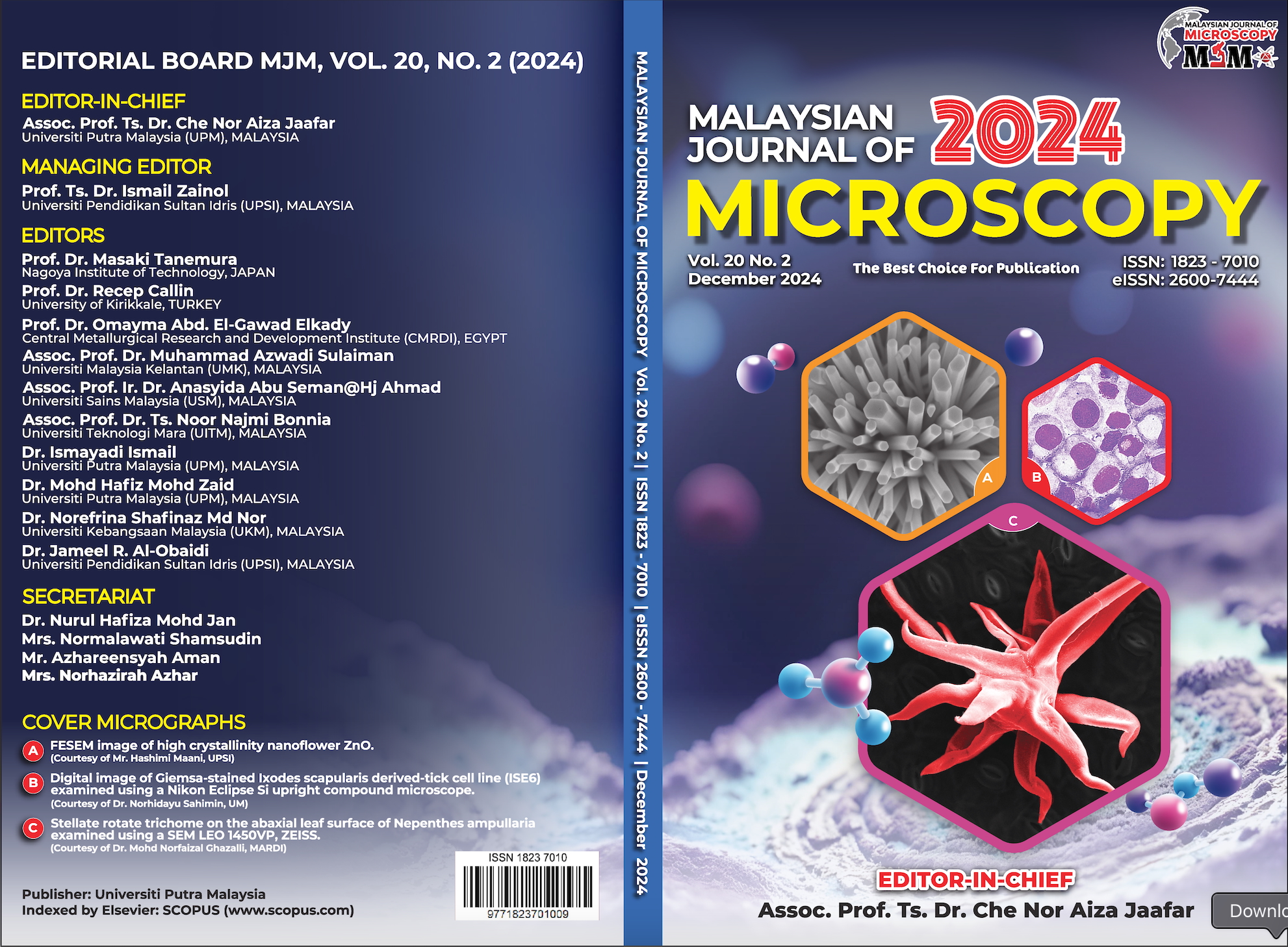FORMULATION OF NANOEMULSIONS FROM CERBERA ODOLLAM SEEDS ESSENTIAL OIL AND THEIR LARVICIDAL ACTIVITIES AGAINST AEDES AEGYPTI LARVAE
Abstract
As of September 2024, there are 322,274 and 94,807 cases due to dengue in Indonesia and Malaysia, respectively. Prompt actions must be taken to control mosquito population and mosquito-borne diseases proliferation. Larvicidal control is one of the effective strategies that are promoted by World Health Organization (WHO). Bintaro (Cerbera odollam) are highly available in wetlands, but they are extremely toxic, especially their seed kernels. In this study, the active compounds of C. odollam seed kernels were gradually extracted using Soxhlet extraction with n-hexane, chloroform and ethanol and were further distilled with a rotary evaporator. Nanoemulsions were formulated with Arabic gum and Triton X-100 by using both homogenisations of high-speed and ultrasonic. Gas chromatography-mass spectrometry (GC-MS), Fourier transform infrared (FTIR) spectroscopy and scanning transmission electron microscopy (STEM) were used to characterise oils and nanoemulsions. Encapsulation efficiencies of nanoemulsions were studied using a UV-Vis spectrophotometer. Larvicidal studies of the nanoemulsions against Aedes aegypti were evaluated for 48 h. The presence of various compounds in different gradual extractions was confirmed by GC-MS chromatograms. The change of intensities and wavenumbers that were presented in FTIR analysis confirmed the successful encapsulation of compounds. Furthermore, spheres with diameters ranged between 8.43 and 55.6 nm were observed in STEM images. The highest encapsulation efficiency (EE) was successfully achieved at 90.3%. Based on log Probit analysis and Abbott’s formula, the LC50 values for extracted compounds ranged between 10.55 and 120.60 mg L-1. The highest mortality rate of larvae was exhibited with extracted compounds from ethanol based-nanoemulsion for 24 h. Overall, these results highlight the usefulness of C. odollam seeds essential oil nanoemulsions in mosquito control and prevention.


